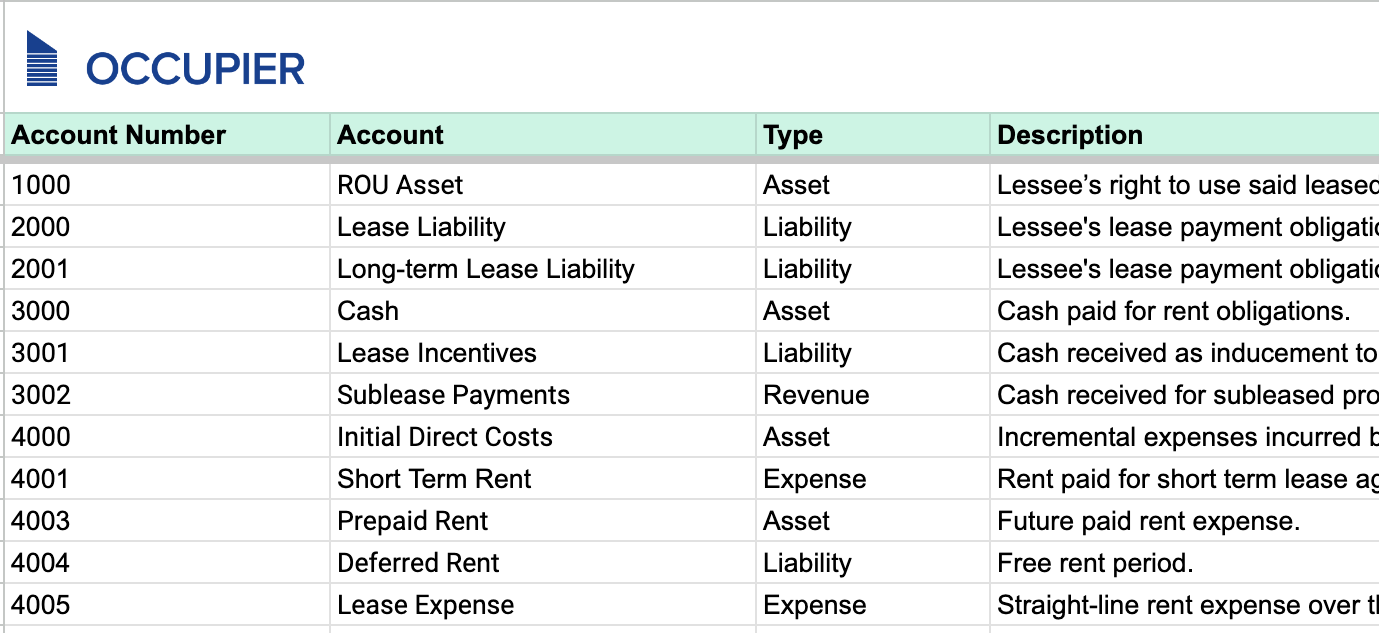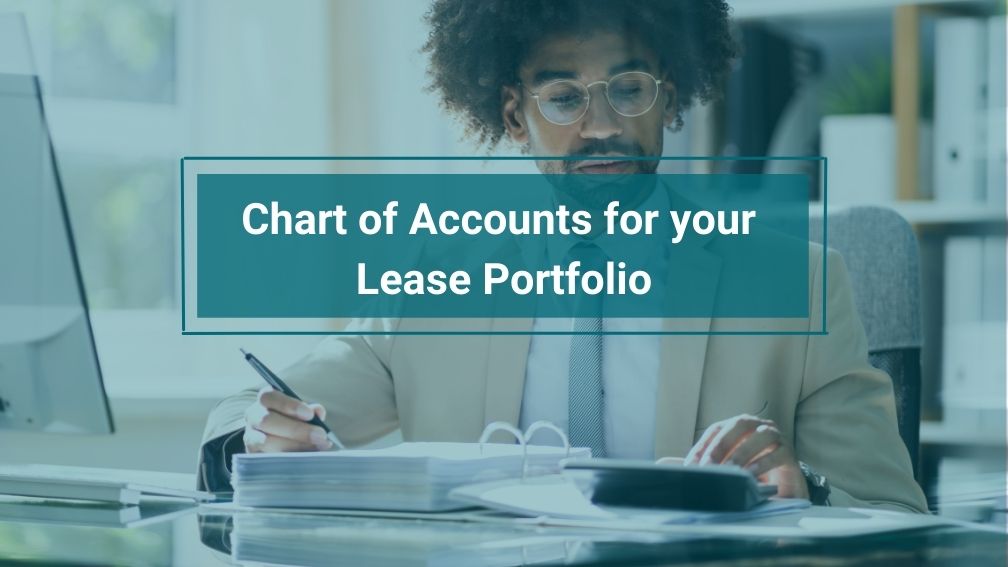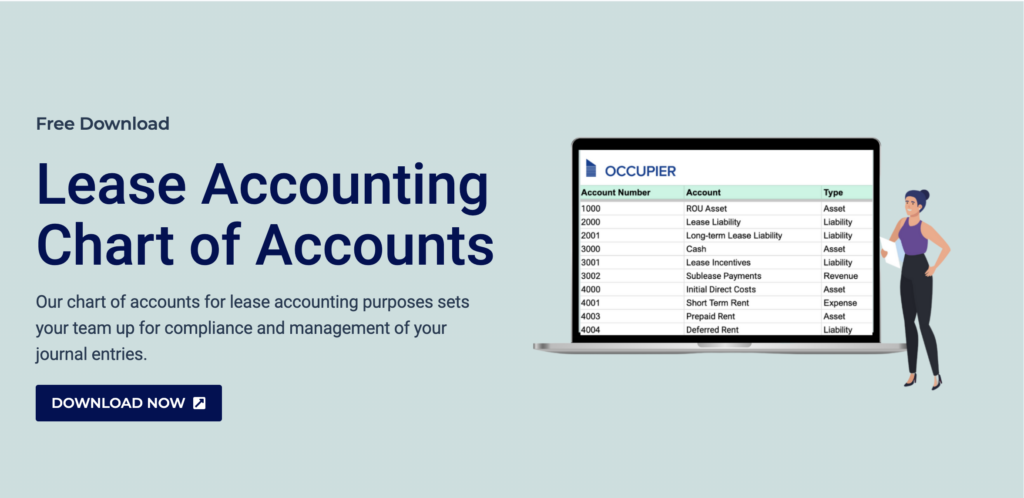Setting Up a Chart of Accounts for your Lease Portfolio
Last Updated on April 14, 2023 by Morgan Beard
The chart of accounts is at the center of all bookkeeping, accounting, and financial reporting activities. Creating a thoughtful chart of accounts for your lease portfolio is important — a mistake can have severe repercussions down the road. A well-organized chart of accounts simplifies record keeping, ensures accuracy, identifies metrics and analytics, and helps ensure compliance with policies and regulations.
Outlining and maintaining a detailed chart of accounts for leasing management and lease accounting purposes is important for compliance and management of your journal entries. A poorly constructed chart of accounts can result in the accounting team needing to create a whole new set of books and going through the tedious process of migrating historical data to the latest chart of accounts structure. If you’d like to avoid that hassle and headache, here’s what you need to know about setting up a top-notch chart of accounts for your lease portfolio.
What is a Chart of Accounts?
A chart of accounts represents all the accounts at a given business. It’s made up of a list of account codes. Each individual code is made up of several segments, each representing a different aspect or departments of the business. A sample account code for your lease portfolio:

The Value of a Well-Defined Chart of Accounts
The structure in this example chart of accounts allows for accuracy in financial statements, like on your income statement, balance sheet, cash flow statement, bank statement and general ledger. If you wanted to see the expense for maintenance costs across the whole company, you could run a report of all charges on account 4000. Suppose you wanted to narrow that down to maintenance fees across your California locations. In that case, you can also include the Location code segment.
The great thing about a chart of accounts is it can be made to fit any company. A large, international corporation might need several more segments than a smaller company to capture the consolidations and rollups needed for accurate reporting.
On the other hand, if you make the chart of accounts too simple, you might pay for it down the road. That’s why carefully considering your account codes and segments is important. Companies with robust lease portfolios are likely to have more complex needs. Here are some tips for a chart of accounts for real estate companies that can grow along with you.
Download our Leasing Chart of Accounts – Excel Template
Occupier has built out the necessary components of a lease portfolio chart of accounts. Making it easy for you to input your account types and prepare monthly journal entries. This chart of accounts – excel template helps you to accurately create your financial statements, like your income statement, balance sheet, cash flow statement, etc. In addition, as your real estate and equipment lease portfolio scales, you’ll be able to seamlessly create transparency and clarity of all completed leasing transactions on the ledger.
What You Need on a Chart of Accounts for Your Lease Portfolio
A company’s chart of accounts must provide a full, clear picture of all completed transactions on the ledger without becoming unwieldy and difficult to manage. Real estate companies have a significant number of accounts to capture, making account and lease management difficult any asset, liability, expense, revenue, and equity accounts need to be captured.
Some of the asset accounts you need to record include:
- Buildings
- Land/Property
- Vehicles
- Telephone and Internet Equipment
- Cash
- Accounts Receivable
While some of the liability accounts might include the following:
- Leases
- Loans
- Mortgages
- Lines of Credit
- Credit Cards
- Payroll
- Security Deposits
Expense accounts will typically include:
- Utilities
- Management Fees
- Commissions
- Insurance
- Legal Fees
- Mortgage Interest
- Interest on Other Loans and Lines of Credit
- Repairs
- Supplies
- Taxes
- Depreciation Expenses
As you plan your real estate company chart of accounts, you’ll also need to keep in mind some of the things you learned in the previous sections. Perhaps you won’t need to break things down by divisions and departments, but a company segment will surely be necessary, especially if your ledger supports multiple reporting entities.
Beyond that first segment, it will be up to you, your finance team, and any implementation consultants you might be using for your financial record keeping or ERP software. When designing a chart of accounts, two important things to keep in mind are the necessary accounts you need to capture (which, for real estate companies, will look a lot like the above list), and what financial reports you will need.
By starting with what you need to get out of it, your chart of accounts for a real estate company should naturally come together and give you some advantages down the road.
The Advantages of a Strong Real Estate Company Chart of Accounts
Beyond the bookkeeping accuracy that a strong chart of accounts offers, it also lets you better monitor company activity and business performance within your accounting process. The well-designed chart of accounts helps in reporting so your team can carefully analyze profit and loss detail reports in order to optimize spend.
With the detailed reporting that comes from a well-structured chart of accounts, you’ll be able to pinpoint the best-performing leased assets and overall business health. This in turn helps you decide whether to hold onto or terminate particular lease agreements. Other metrics, like interest expenses, repair costs and fair value of the underlying asset are also easily highlighted with a well-segmented chart of accounts. In addition, by adding the initial direct cost to your prepaid lease payments and subtracting your lease incentives you gain a clear picture of your total liabilities and total assets.
Optimize Your Real Estate Chart of Accounts with Occupier
In today’s economic climate, understating your financial performance is key. Sound financial reporting within your lease portfolio begins with a well-designed chart of accounts aligned with the needs of your real estate leases and equipment lease. The best way to find this sweet spot is with a lease accounting system that puts you in control of your operations — and it’s why you should get to know Occupier.
We build modern solutions on top of an innovative and intuitive tech stack, bringing you the future of lease management today. Our products power lease administration, lease accounting, and transaction management workflows and our implementation services will help ensure your books are set up just right for your company’s specific needs.Schedule a demo today to find out why Occupier is the premiere solution for real estate and lease management.

